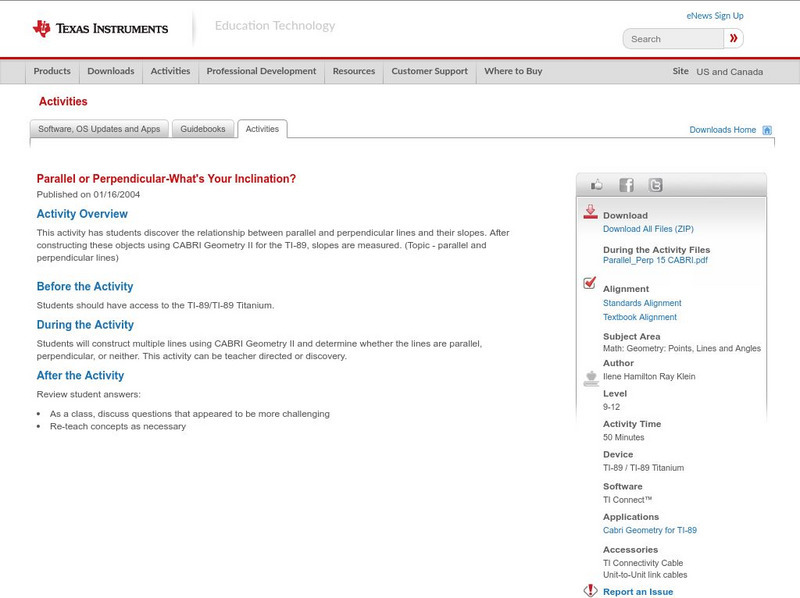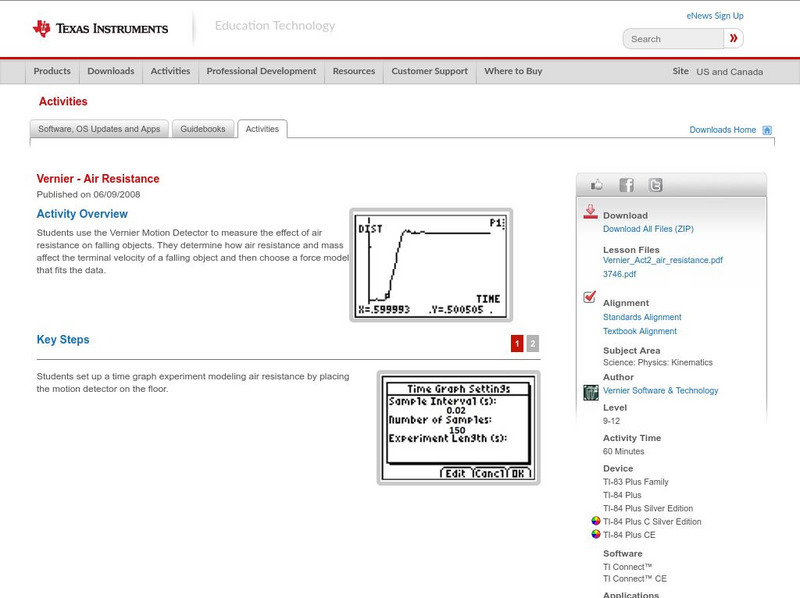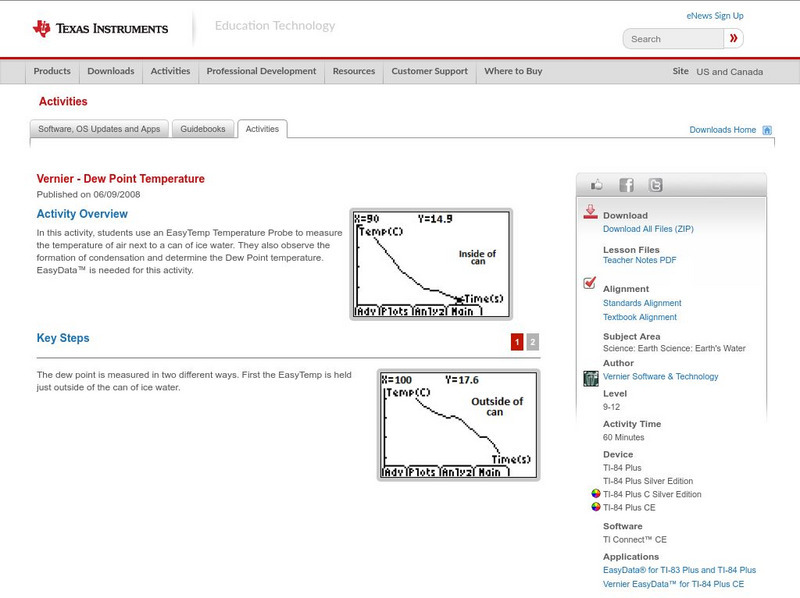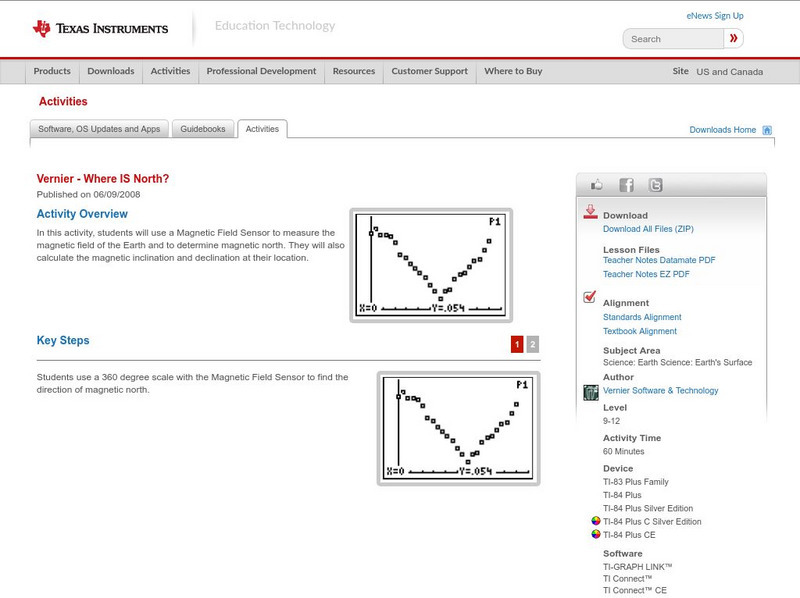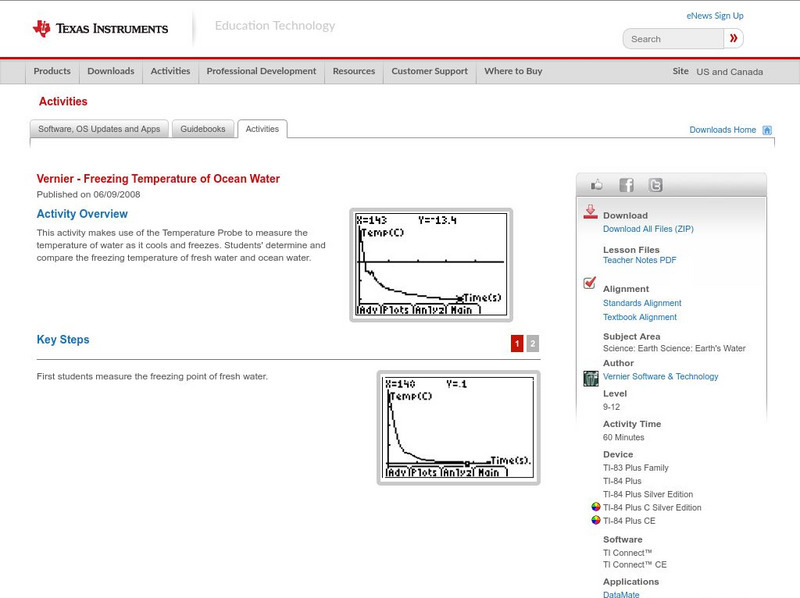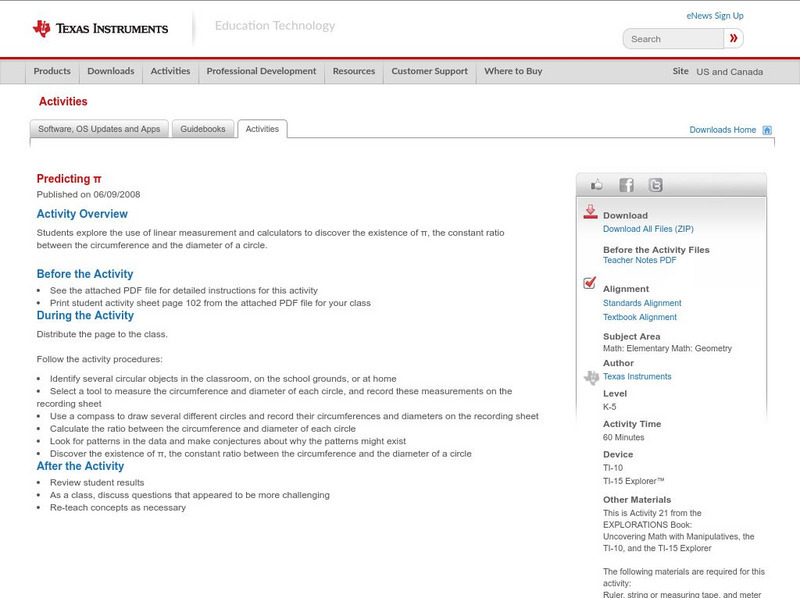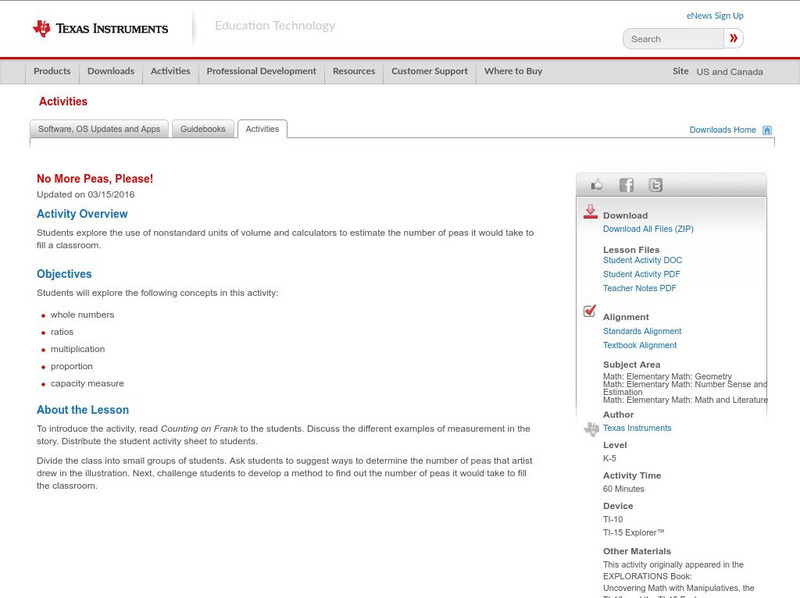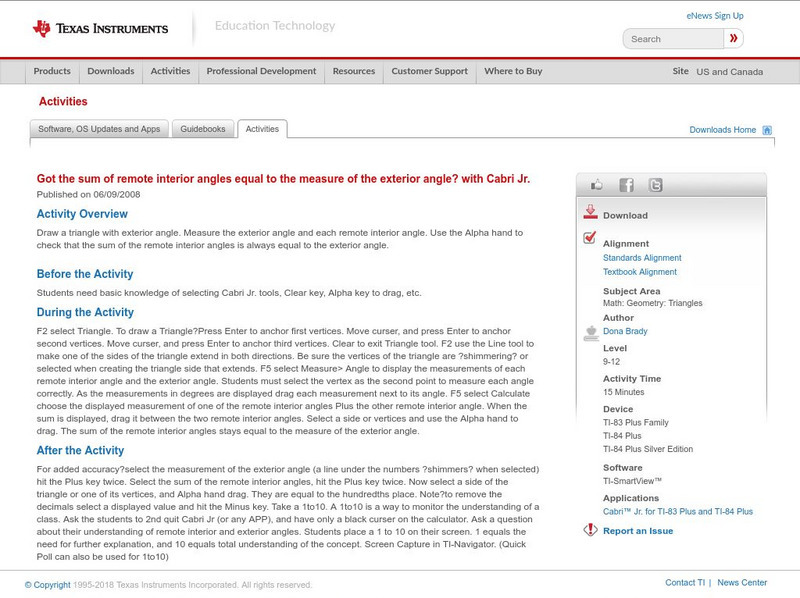Texas Instruments
Texas Instruments: Got Complements? With Cabri Jr.
Use the Axes and Measure Angle tool to explore and calculate complementary angles.
Texas Instruments
Texas Instruments: Electrolytes: Which Liquid Produces the Most Volts?
In this activity, students' will use a Voltage Sensor to measure the voltage produced by an electrolyte. They will understand that acids and bases are electrolytes and compare voltages of acids to the voltages of bases. Students' will...
Texas Instruments
Texas Instruments: Conductimetric Titration & Gravimetric Determination
Students use a Conductivity Probe to measure change in conductivity during a chemical reaction and determine the equivalence point of the reaction They determine the mass of the product and calculate the molar concentration of the...
Texas Instruments
Texas Instruments: Parallel or Perpendicular What's Your Inclination?
This activity has students discover the relationship between parallel and perpendicular lines and their slopes. After constructing these objects using CABRI Geometry II for the TI-89, slopes are measured. [Requires Adobe Reader.]
Texas Instruments
Texas Instruments: Air Resistance
Students use the Motion Detector to measure the effect of air resistance on falling objects. They determine how air resistance and mass affect the terminal velocity of a falling object and then choose a force model that fits the data.
Texas Instruments
Texas Instruments: Points on the Perpendicular Bisector of a Segment
In this activity, students use the drawing and measurement tools of Cabri Jr., to learn and understand the concept of "equidistant from the endpoints of a segment." They observe the changes if they move a point on the perpendicular...
Texas Instruments
Texas Instruments: Glencoe Mid. School Science: Effect of Acid Rain on Limestone
Students will collect rainwater and measure its acidity. They will use the rainwater to determine the effect that acid rain has on limestone.
Texas Instruments
Texas Instruments: Heat of Fusion
In this activity, students can use a calorimeter to measure the amount of heat needed to melt ice and determine the heat of fusion for ice. EasyData is needed for this activity.
Texas Instruments
Texas Instruments: Go for the Gold
Students explore and use the concept of ratio in a real-world situation. They will make judgments regarding accuracy and precision of measurement.
Texas Instruments
Texas Instruments: Looking at Statistics Through Circles
In this activity, students will measure round objects to determine the circumference and diameter, and use the data to explore geometric concepts of the circle with statistics.
Texas Instruments
Texas Instruments: Dew Point Temperature
In this activity, students use an EasyTemp Temperature Probe to measure the temperature of air next to a can of ice water. They also observe the formation of condensation and determine the Dew Point temperature. EasyData is needed for...
Texas Instruments
Texas Instruments: Jason: Tracking the Path of Animals
Rainforest at the Crossroads: Simulate the motion of an animal using a rectangular object placed at different positions on the floor. Then measure and graph the animal's coordinates, and examine its path.
Texas Instruments
Texas Instruments: Where Is North?
In this activity, Students can use a Magnetic Field Sensor to measure the magnetic field of the Earth and to determine magnetic north. They will also calculate the magnetic inclination and declination at their location.
Texas Instruments
Texas Instruments: Body Cooling Rate of Animals
Students make two models to stimulate the cooling rate of different skin surface areas. They use a Temperature Sensor to measure the cooling rate of the models. The students also compare the cooling rates of the models to determine the...
Texas Instruments
Texas Instruments: Freezing Temperature of Ocean Water
This activity makes use of the Temperature Probe to measure the temperature of water as it cools and freezes. Students' determine and compare the freezing temperature of fresh water and ocean water.
Texas Instruments
Texas Instruments: Predicting Pi
In this activity, students explore the use of linear measurement and calculators to discover the existence of pi, the constant ratio between the circumference and the diameter of a circle.
Texas Instruments
Texas Instruments: Do You Have a Temperature?
In this activity, students represent and analyze climate data. They use linear regressions to understand the relationship between temperatures measured in the Fahrenheit and Celsius scales and examine conversion factors.
Texas Instruments
Texas Instruments: Comparing Decimals Wider Isn't Always Larger
In this activity, students learn to compare and order decimals. They learn to measure decimals by using the Number Line application.
Texas Instruments
Texas Instruments: Cabri Geometry Tour
In this activity, students will practice some of the basic functions of the Cabri Geometry software, including use of the Pointer, Point, Line, Measure, and Construct toolbars.
Texas Instruments
Texas Instruments: Warming a Solution
In this activity, students use a temperature sensor to measure the temperature of water samples before and after adding washing soda. They understand concepts of dependent and independent variables and study the relationship between them.
Texas Instruments
Texas Instruments: No More Peas, Please!
In this activity, students explore the use of nonstandard units of volume and calculators to estimate the number of peas it would take to fill a class room.
Texas Instruments
Texas Instruments: Numb3 Rs: It's All Connected
Based off of the hit television show NUMB3RS, this lesson uses students' knowledge of graph theory (networks) to introduce two measures of centrality (how connected a particular node is to the entire network), known as degree centrality...
Texas Instruments
Texas Instruments: Sum of Remote Interior Angles Equals Exterior Angle
Draw a triangle with exterior angle. Measure the exterior angle and each remote interior angle. Use the Alpha hand to check that the sum of the remote interior angles is always equal to the exterior angle.
Texas Instruments
Texas Instruments: Solar Cookers and Easy Data
Students use a TI-84, Easy Temp and Easy Data to measure the quality of solar cookers. Hot dogs are heated under the May sunshine after students design, build and test their own solar cookers.





